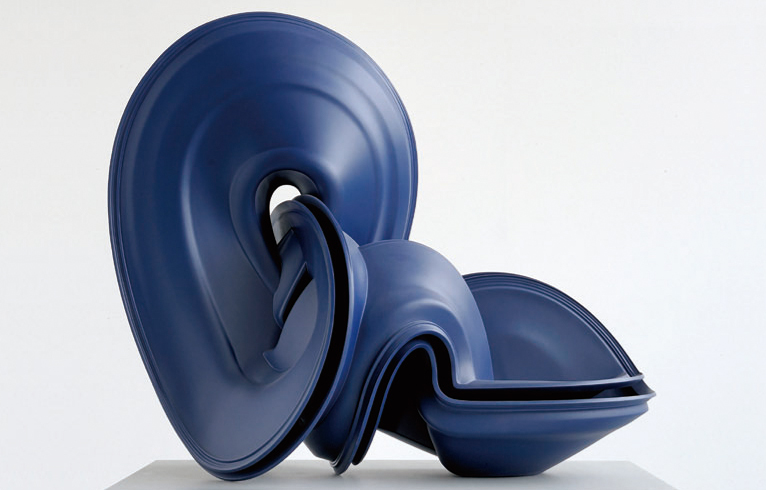Tony Cragg: Sculptures and Drawings
| May 16, 2012 | Post In LEAP 14

The earliest encounter between Tony Cragg and Chinese audiences was in 2005 during the second Beijing International Art Biennale, where the British sculptor won First Prize. Perplexingly— especially as this exhibition functioned also on the diplomatic level, as part of the British Council’s UK Now festival, but also because Cragg himself often cites it alongside his 1988 Turner Prize and 2007 Praemium Imperiale— this fact was quite plainly ignored here. Even though there isn’t much chatter about the 2005 Beijing Biennale in the contemporary art world, it was nevertheless the largest global gathering of contemporary fine art and sculpture at the time. From just this one detail, we obliquely get the sense that Cragg’s creations remain conservative and moderate in character.
Though in no way negating Cragg’s position in contemporary art, in England today he seems no more than a figure from art history. Compared to Antony Gormley and Anish Kapoor, Cragg’s contemporaries in age but whose renown came later, he has long been identified as a quintessentially English sculptor, despite establishing a second base in Wuppertal, Germany. In 2011, one reviewer for The Guardian traced a lineage for contemporary British sculptors, according each a playful moniker. There were Henry “carver” Moore, Anthony “welder” Caro, Richard “walker” Long, and of course Tony “scavenger” Cragg. And it is Cragg, after a decade of eminence in the 1980s, after Damien Hirst and the YBAs, who now finds his star on the rise again.
Aside from Minster (1988), a sculpture resembling a group of cathedral spires that is made from used tire parts and gears, most of the pieces seen here show a different side of the sculptor, perhaps a Tony “scientist” Cragg or Tony “gardener” Cragg. Here, the most memorable sculptures are what Cragg has produced since the late 1980s, when he focused his energies on creating monumental works intended for public display in parks and plazas. During the same period, he also transitioned from using found objects to sculpting in more traditional materials such as bronze and marble. Then in 2008, Cragg helped to establish the Waldfrieden Sculpture Park in Wuppertal, where his works are displayed outdoors year round. This current exhibition showcases a number of these. Yet missing are his earlier pieces, such as New Stones, Newton’s Tones (1978) and Mortar and Pestle (1986), where Cragg first began to experiment with different materials.
The recent sculptures by Cragg are strongly dependent on their environments, leading him continuously to explore, and expand upon, organic forms and motifs that connect nature to science. His works often appear to be in conversation with their surroundings, benefiting from nature while giving back to it. In interviews, Cragg has emphasized how such spectacular works are displayed highlights their monumentality. Designed by the Japanese architect Arata Isozaki, the CAFA Art Museum has expansive open spaces that no doubt enhance this monumentality of Cragg’s sculpture.
Yet the environmental nature of Cragg’s works also requires a revaluation of this breed of art history-laden retrospective. Cragg himself has said, “it is very important to have first-order experiences— seeing, touching, smelling, hearing— with objects and images and to let that experience register.” Sadly, the works here— and many sculptures that live in the real world instead of museums— have been yanked from their natural environments and stuffed into a rigid, cold white box, their sensibilities held back and scarcely visible. While this exhibition was able to project some vague monumentality, no matter how these 50 or so pieces of sculptures are arranged, and in however well-designed a space, they will not have the same force that they possess when encountered in the Sculpture Park in Wuppertal. Pu Hong (Translated by JiaJing Liu)

